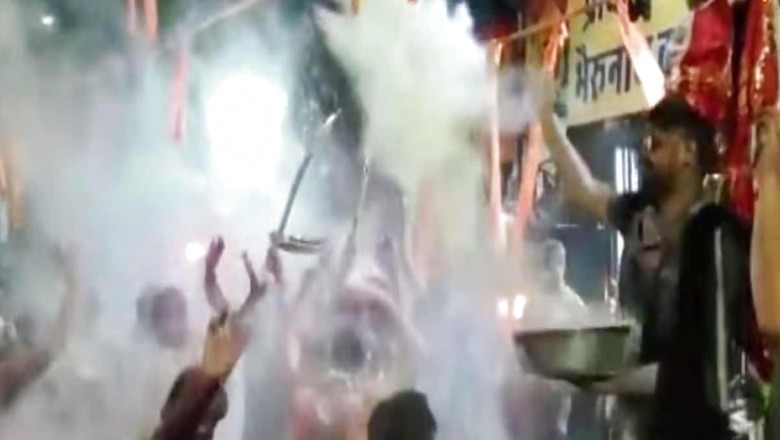
views
On March 25, all of the country drowned in colours and gulaal, enjoying the spirit of Holi. The festival of colours has enthralled Indians and even many abroad since time immemorial and it is characterised by joy and merriment. But have you ever associated Holi with the macabre?
Alongside the customary use of colourful powders, there exists a distinct form known as Masan Holi, which may border on the macabre. This special observance involves the utilisation of Bhasma (ash) amidst fiery pyres and carries profound cultural and religious significance. As shocking and unsettling as it may sound, this tradition was customary in Varanasi for many years and now, for the last 15 years, inside temple grounds in Bhilwara, Rajasthan.
For the past 15 years, a unique form of Holi has been observed at the Shri Prachin Masaniya Bhairav Nath Temple in the Panchmukhi Moksh Dham of Bhilwara city. This distinct celebration stands out for its late-night festivities, utilising the ashes from the burning pyres of the deceased.
Groups gather at the Bhairav Nath Temple to partake in Holi’s traditional rituals and customs. A significant number of devotees, not only from Bhilwara but also from neighbouring states, converge here to participate in this ash-based Holi celebration, visiting the temple to engage in the vibrant festivities.
According to Ravi Kumar, the priest of Shri Masaniya Bhairunath, for the past 15 years, Holi has been celebrated with pyre ashes at the crematorium inside the Shri Masaniya Bhairu Nath temple in Bhilwara city. This year, especially during Holika Dahan, 1008 earthen lamps were lit, followed by the playing of Holi with ashes. The festivities commence with a grand procession throughout the crematorium dedicated to Lord Bhairav Nath, culminating in a grand Maha Aarti ceremony. Devotees from neighbouring states and the surrounding district gather to participate in this unique Holi celebration. According to him, the application of ash during Bhasma Holi represents the purging of impurities and the rebirth of the spirit, making it a profoundly spiritual and significant festival for those who take part.




















Comments
0 comment